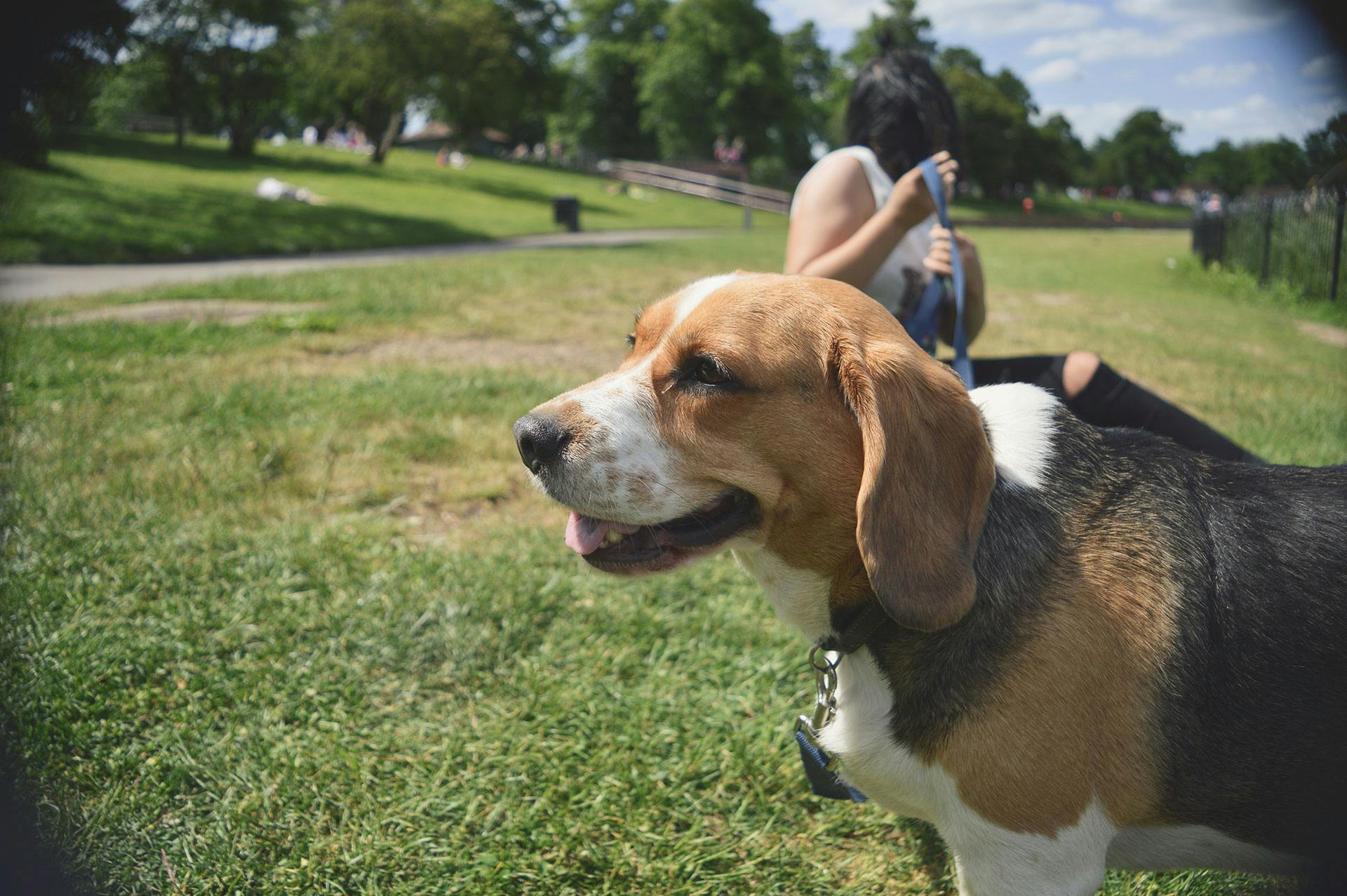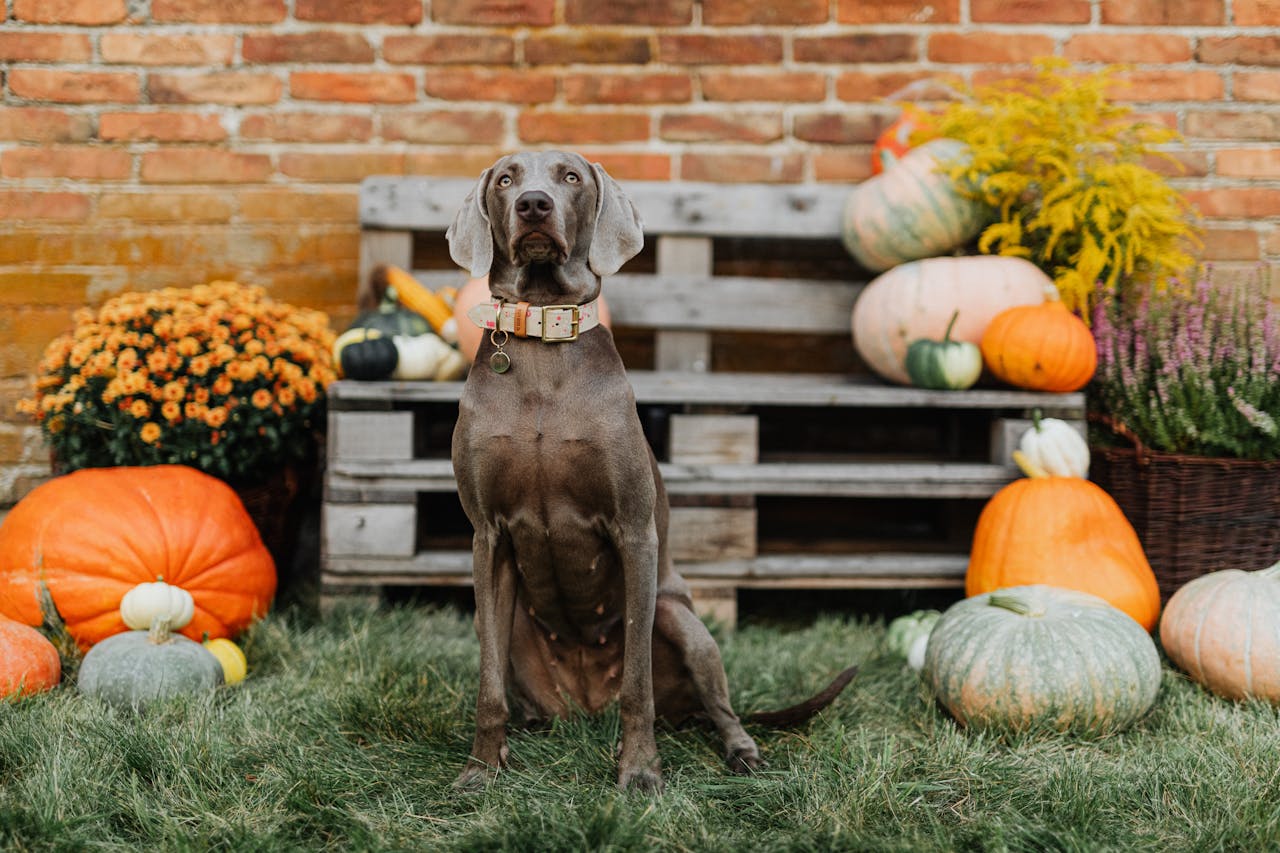Reader Question: “Hey there…My name’s Tom and I’ve got a lovable 2-year-old Beagle named Baxter, but he just won’t listen to me. I’ve tried everything from clicker training to positive reinforcement treats, but he always barks at people and I’m worried because he howls like crazy whenever he’s alone. Do you have any advice or techniques that could help me out? I’m really at my wits’ end here. Thanks a lot!”
Hi Tom,
Thank you so much for reaching out! Let me start by saying it’s wonderful to see how much you care about Baxter. You’re already on the right track just by being thoughtful about his behavior and looking for ways to help him. Beagles, as you know, are very lovable and curious dogs. Their high energy and stubborn streaks can make them a bit of a challenge, though. Here’s the good news: We can help you understand what to do when your dog doesn’t listen to you. It will just take the right techniques and a little patience.
Why Is My Dog Not Listening to Me?
Isn’t it frustrating when a dog doesn’t seem to listen? It can leave many pet parents feeling like they’re doing something wrong. But the truth is, it’s rarely because the dog is “bad” or ignoring you on purpose. Dogs like Baxter don’t wake up thinking, “How can I frustrate Tom today?” They’re simply responding to what they understand (or don’t understand) about the world around them.
Would you say Baxter is confused, distracted, afraid, or just not trained to listen yet? Often, it’s not that dogs are being disobedient (they just haven’t been taught how to respond in the right way). So, it’s up to us to communicate clearly and guide them.
Common Reasons Why Dogs Struggle to Listen
1. They Don’t Understand What You Want
First and foremost, it’s possible Baxter might not yet know what the commands you’re using mean. We have to remember that dogs don’t automatically know our rules or expectations. Instead, we must teach them in a way they can understand. For example, if you’ve been using different words or tones for the same command (e.g., “Stop barking,” “Quiet,” “No noise”), it might be confusing him.
2. He’s Distracted by Everything Around Him
As you’ve likely noticed, it’s pretty easy for Beagles to get distracted! Their noses are constantly on the hunt for something interesting. Baxter might be too distracted by the smells, sights, and sounds around him to pay attention to anything you’re asking of him. For a Beagle, the world is one big adventure. It’s so easy for them to lose focus!
3. He’s Feeling Anxious or Overwhelmed
It’s entirely possible that Baxter feels nervous or unsure of something, especially if he barks at people or howls when he’s alone. Barking, whining, or pacing are natural ways for dogs to express their anxiety. For example, meeting new people can be overwhelming for some (especially if they suspect those people as a threat).
4. He Has More Energy Than He Knows What to Do With
On the other hand, it’s also worth mentioning that Beagles are high-energy dogs. When they don’t get enough exercise or stimulation, that energy can come out in less-than-ideal ways. It’s like how we might feel fidgety when we have to sit quietly in a chair all day and are bursting with energy. Same for dogs!
5. He’s Testing Your Boundaries
At this stage in his life, it’s important to remember that Baxter is like a teenager. He’s curious, energetic, and learning where those limits are. He’s being defiant; he’s just figuring out what he can and can’t get away with. This is a normal part of development. (It means you’ll need to be extra consistent with training.)
6. There Might Be a Medical Issue
Finally (and perhaps most importantly) when thinking about what to do when your dog doesn’t listen, have you ruled out any physical reasons for his behavior? For example, if Baxter seems unresponsive, it’s worth checking if he has any hearing problems or other health concerns. A quick visit to the vet can help rule out these possibilities and give you peace of mind.
How to Get Your Dog to Respect and Listen to You
When dogs don’t listen, it’s tempting to raise your voice or repeat yourself over and over. But here’s something interesting: studies tell us that yelling doesn’t make dogs listen better. Quite the opposite. It usually makes them more anxious or unsure because they sense your frustration. They still don’t know what you want from them.
Instead, when your dog doesn’t listen to you, the key is to stay calm and project quiet confidence. Dogs are actually incredibly in tune with our emotions. So, when we’re calm and in control, they see us as a leader they can trust.
5 Simple, Actionable Steps
1. Go Back to Basics
If Baxter doesn’t respond to basic commands like “sit” or “stay,” it’s not because he’s stubborn. Likely, he hasn’t fully learned what those words mean. Try going back to square one. Stick to clear, consistent instructions and reward him when he gets it right. Keep training sessions short and positive. Remember that repetition is key.
2. Be Consistent with Rules and Commands
For Baxter’s sake, try to keep training consistent (dogs learn faster when they know what to expect). Example: If one day you let him bark at the window and the next day you scold him for it, he won’t comprehend what you want. Make sure you and all in the household set and follow clear rules.
3. Speak Calmly and Clearly
When you give a command, it’s especially effective if you speak in a calm and steady tone. Otherwise, raising your voice or sounding frustrated might make Baxter anxious. He just won’t understand why you’re upset. Instead, use simple, calming words. Also, let your body language reinforce your new-found calm authority.
4. Get Him to Focus on You
Here’s a trick that works well for many: Say Baxter’s name in a happy, upbeat tone and wait for him to look at you. When he does, reward him with praise or a treat. This is such a simple exercise that shows paying attention to you is always a good thing.
5. Redirect Barking and Teach Calm Behaviors
If Baxter likes to yap at people, he could be either excited or uneasy. Instead of scolding him, try redirecting his energy somehow. Show him to a specific spot (like his bed) when someone passes by the window. When he stays quiet and calm, give him a treat and let him know he did great!

Why Doesn’t My Dog Listen When I Call Him?
Getting a dog to come when called can be tricky, especially for independent breeds like Beagles. If Baxter doesn’t respond when you call him, it might be because he doesn’t fully understand the command yet. It could also be because he’s too distracted by something else. Here are some simple tips on what to do when your dog doesn’t listen or respond to his name:
1. Start in a Quiet, Safe Space
To start, it’s helpful to practice recall in a quiet environment. Your living room or backyard, for example, is perfect because there shouldn’t be a lot of distractions.
2. Make It Worth His While
For this step, use high-value rewards (like his favorite treats or toys) to make coming to you as exciting and rewarding as possible. When Baxter comes to you, celebrate like he just did the best thing in the world.
3. Start Close and Build Distance
At first, it’s easier to call a dog from just a few feet away and reward them immediately when they come. As Baxter gets the hang of this, you can gradually increase the distance.
4. Avoid Punishing Slow Responses
When training recall, you want to be careful not to scold Baxter if he takes a while to come. If results don’t come quickly, don’t tell him off when he finally arrives because punishing him will only make him hesitant to come next time.
5. Add Distractions Gradually
To build his focus, it might be helpful to slowly add distractions once he gets the hang of consistently coming to you in quiet settings. For instance, you might practice while another person is also in the room (or while there’s a toy in sight).
Addressing Separation Anxiety and Barking
When Baxter howls while you’re away, it’s likely because he misses you and doesn’t know when (or if) you’re coming back. This kind of behavior is a classic sign of separation anxiety. Unfortunately, it’s a common challenge for many dogs. They aren’t trying to be difficult or cause trouble; they simply express distress in the only way they know how.
Also, according to a University of Georgia study, Beagles tend to experience stress from social isolation and become more agitated when left alone. In particular, they found that compared to dogs kept alone, Beagles kept in pairs tended to vocalize less and spend more time sleeping. Therefore, increasing Baxter’s social interactions or companionship may help him quiet down when he is by himself.
A few other strategies that might help:
- Practice leaving calmly: Don’t make a big fuss about saying goodbye. Baxter might think, “If they’re making such a big deal about leaving, maybe something bad is going to happen!” Instead, stay calm and neutral.
- Desensitize him to your absence: Dogs sometimes need help learning that being alone is okay. Start by leaving him alone for just a few minutes at a time and build on that.
- Make his space more cozy: Maybe set Baxter up with a designated area or crate (if he has been crate trained). Include his favorite bed, some toys (and maybe even a piece of clothing that smells like you).
- Give him mentally stimulating things: When dogs are left alone with nothing to do, it’s more likely they’ll focus on their anxiety. Instead, leave him with a stuffed Kong Toy filled with peanut butter or a snuffle mat where he can “hunt” for treats and focus on something enjoyable.
- Consider some calming aids: If his anxiety is particularly intense, consider using calming aids as part of your strategy. Products like Adaptil diffusers mimic calming pheromones that help many dogs feel more relaxed.
- Seek professional help if needed: Sometimes, despite our best efforts, it’s necessary to get specialized help for a dog’s separation anxiety. If Baxter still doesn’t listen to you and continues howling while you’re away, it might be time to consult a vet or a certified behaviorist for tailored advice.
See also:
- 10 Basic Dog Training Tips for Beginners to Master
- What Steps Can You Take to Correct Your Dog’s Bad Behavior?
Final Thoughts
What to do when your dog doesn’t listen? Stay calm, approach commands with confident authority, and be patient. Above all, don’t scold them.
Tom, don’t lose hope. Baxter is lucky to have a caring owner like you! With calm, consistent training and lots of patience, you’ll see progress. Remember to celebrate the small wins and enjoy the journey. Best of luck, and give Baxter a belly rub for me!





Louise, thanks so much for putting these tips up.. you’ve given me some hope actually. I was starting to think we were doing something wrong. I wonder if perhaps Baxter senses the frustration in my voice when he doesn’t listen . I feel like we are always telling him to be quiet! We’ll try using a quieter tone and giving him a few new toys to play with. Didn’t you mention something about making Maks a homemade snuffle ball? Was it easy to make?
You’re welcome, Tom! I hope things settle down for you and Baxter. I did make Maks a snuffle ball, yes! They are surprisingly easy to make, actually. Here’s a YouTube tutorial for you. Keep us posted on your progress!